Ripple Analysis and Suppression Method Research of Direct Drive Permanent Magnet Synchronous Wind Turbine under Wind Shear
Abstract
:1. Introduction
2. Transfer Mechanism Analysis of Fluctuation Caused by Wind Shear in PMSWT System
2.1. Ripple Analysis in Generator-Side
2.2. Ripple Distribution in Converts and the Grid Connection Point
3. Fluctuation Power Suppression Method Based on Ripple Current Extraction by Adaptive Notch Filter
3.1. Ripple Current Extraction by Adaptive Notch Filter
3.2. Fluctuation Power Supression Method
4. Simulation Results
5. Conclusions
Author Contributions
Funding
Conflicts of Interest
References
- Bo, L.; Zhi-Jia, H.E.; Hao, J. Wind power status and development trends. J. Northeast Dianli Univ. 2016, 36, 7–13. [Google Scholar]
- Mohammadi, E.; Fadaeinedjad, R.; Naji, H.R. Investigation of horizontal and vertical wind shear effects using a wind turbine emulator. IEEE Trans. Sustain. Energy 2018, 10, 1206–1216. [Google Scholar] [CrossRef]
- Guo, P. Influence Analysis of Wind Shear and Tower Shadow on Load and Power Based on Blade Element Theory. In Proceedings of the IEEE 2011 Chinese Control and Decision Conference, Mianyang, China, 23–25 May 2011; pp. 2809–2812. [Google Scholar]
- Dou, Z.L.; Wang, H.; Ling, Z.B. Research on wind turbine emulator system based on blade element theory. Adv. Technol. Electr. Eng. Energy 2011, 30, 1–5. [Google Scholar]
- Dale, S.L.; Dolan, P.; Lehn, W. Simulation model of wind turbine 3p torque oscillations due to wind shear and tower shadow. IEEE Trans. Energy Convers. 2006, 21, 718–724. [Google Scholar]
- Jeroen, D.M.D.K.; Tine, L.V. Shaft speed ripples in wind turbines caused by tower shadow and win shear. IET Renew. Power Gener. 2013, 8, 195–202. [Google Scholar]
- Chavan, D.S.; Bhide, S.D.; Karandikar, P.B. Effect of Vertical Wind Shear on Flicker in Wind Farm. In Proceedings of the IEEE Global Humanitarian Technology Conference: South Asia Satellite, Trivandrum, India, 23–24 August 2013. [Google Scholar]
- Hu, W.; Su, C.; Chen, Z. Impact of Wind Shear and Tower Shadow Effects on Power System with Large Scale Wind Power Penetration. In Proceedings of the 37th Annual Conference of the IEEE Industrial Electronics Society, Melbourne, Australia, 7–11 November 2011; pp. 878–883. [Google Scholar]
- Bahramjerdi, R.F.; Moschopoulos, G.; Moallem, M. The impact of tower shadow, yaw error, and wind shears on power quality in a wind-diesel system. IEEE Power Energy Soc. Gen. Meet. 2009, 24, 102–111. [Google Scholar]
- Roohollah, F.; Gerry, M. The impact of tower shadow, yaw error, and wind shears on power quality in a wind–diesel system. IEEE Trans. Energy Convers. 2009, 24, 102–111. [Google Scholar]
- Koldo, R.; Guttierez, J.J.; Lehn, G. Experimental study of the summation of flicker caused by wind turbines. Energies 2019, 12, 2404. [Google Scholar]
- SeokJu, K.; Jaewoo, K. Reactive power management based on voltage sensitivity analysis of distribution system with high penetration of renewable energies. Energies 2019, 12, 1943. [Google Scholar]
- Hu, Y.P. Research status and development trend on large scale wind turbine blades. J. Mech. Eng. 2013, 49, 140–151. [Google Scholar] [CrossRef]
- Weihao, H.; Yunqian, Z. Flicker mitigation by speed control of permanent magnet synchronous generator variable-speed wind turbines. Energies 2013, 6, 3807–3821. [Google Scholar]
- Shen, W.; Zheng, X. An Active Damping Scheme of the Voltage-Source Converter Driving the Induction Machine Damping Unit for Mitigating Subsynchronous Oscillation in Power Systems. In Proceedings of the 11th IET International Conference on AC and DC Power Transmission, Birmingham, UK, 10–12 February 2015. [Google Scholar]
- Gamini Jayasinghe, S.D.; Mahinda, V. A dual inverter-based supercapacitor direct integration scheme for wind energy conversion systems. IEEE Trans. Ind. Appl. 2013, 49, 1023–1030. [Google Scholar] [CrossRef]
- Diaz-Gonzalez, F.; Bianchi, F.D. Control of a flywheel energy storage system for power smoothing in wind power plants. IEEE Trans. Energy Convers. 2014, 29, 204–215. [Google Scholar] [CrossRef]
- Weihao, H.; Zhe, C. Flicker mitigation by active power control of variable-speed wind turbines with full-scale back-to-back power converters. IEEE Trans. Energy Convers. 2009, 24, 640–650. [Google Scholar] [CrossRef]
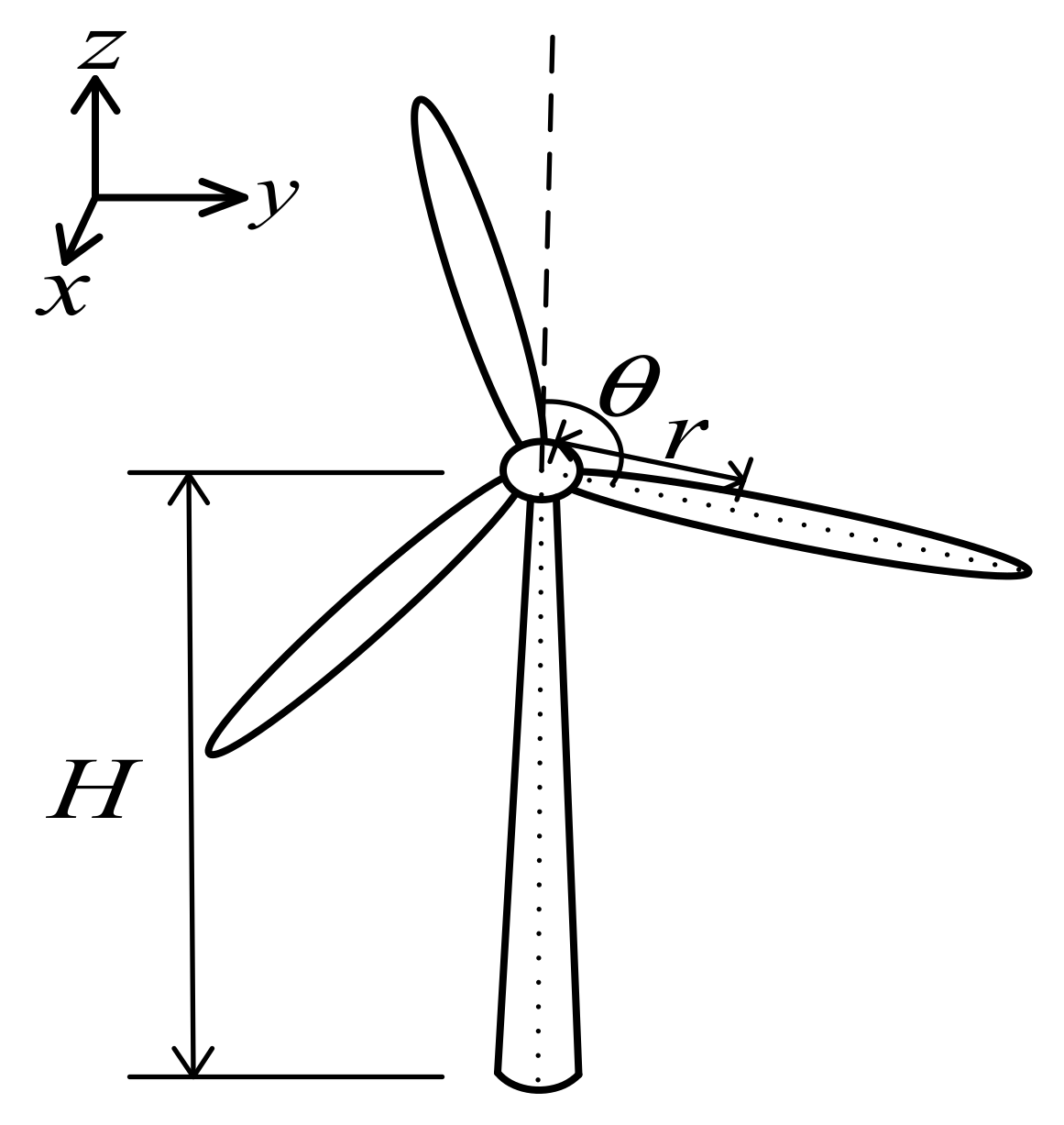
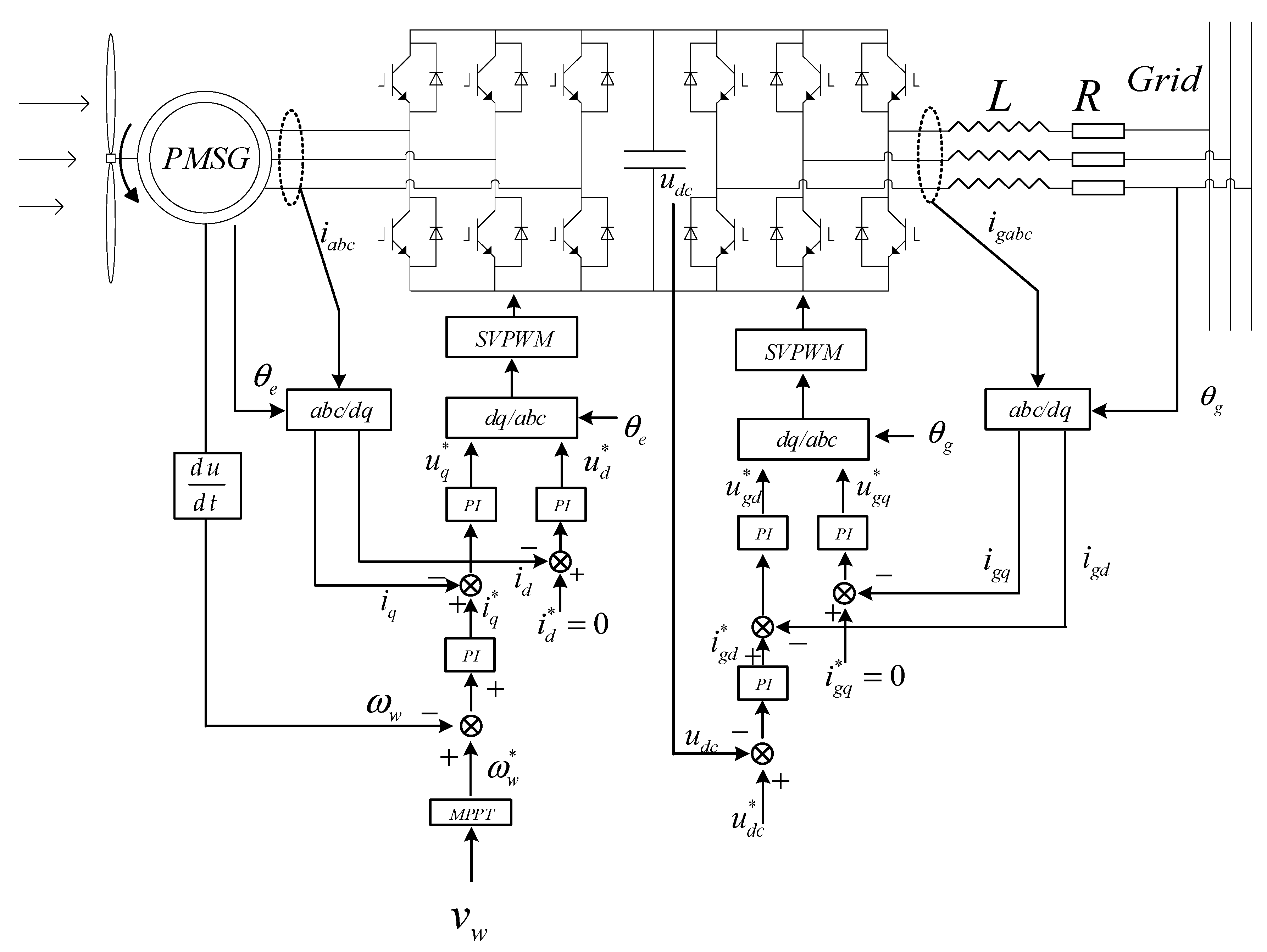



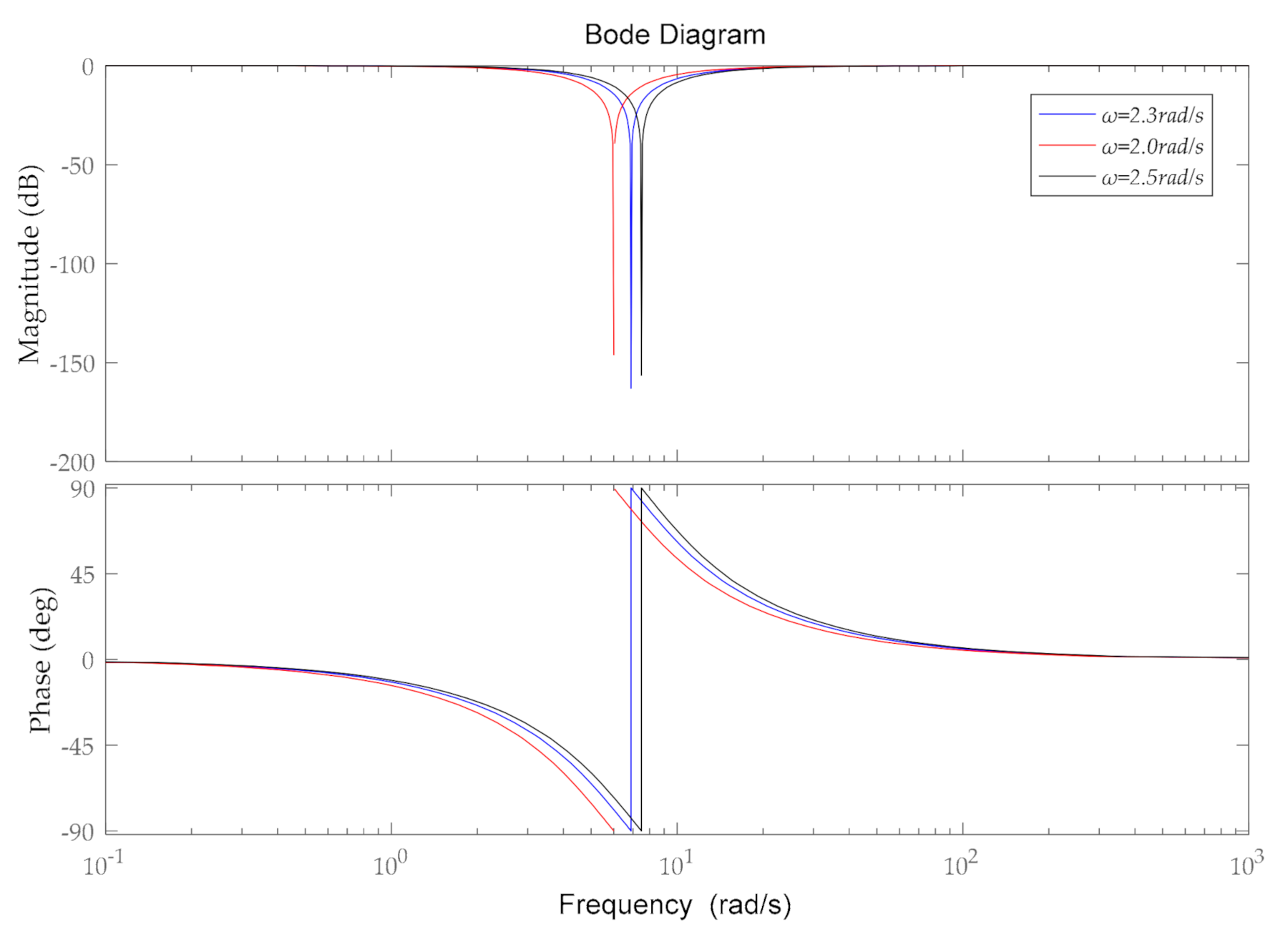

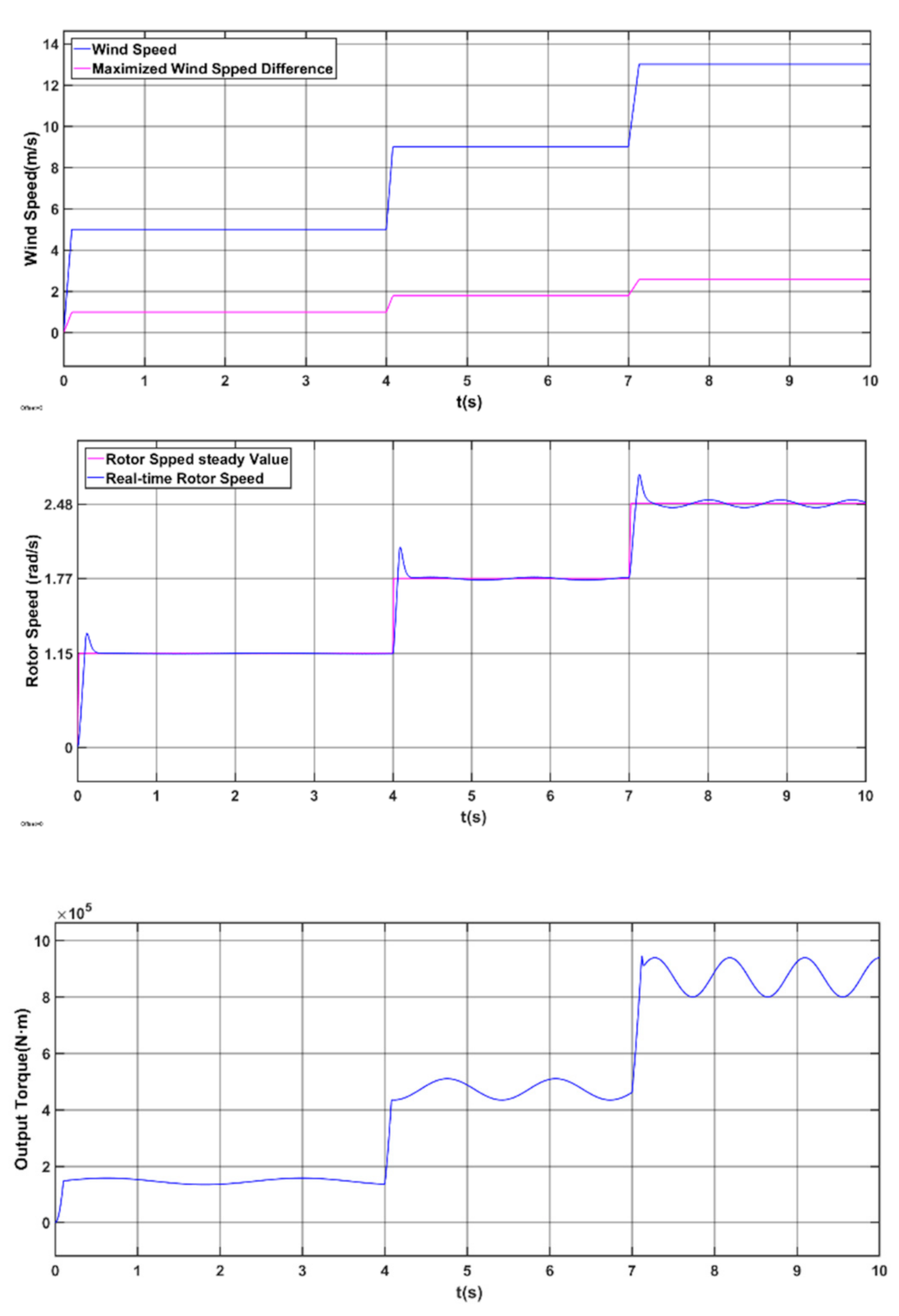

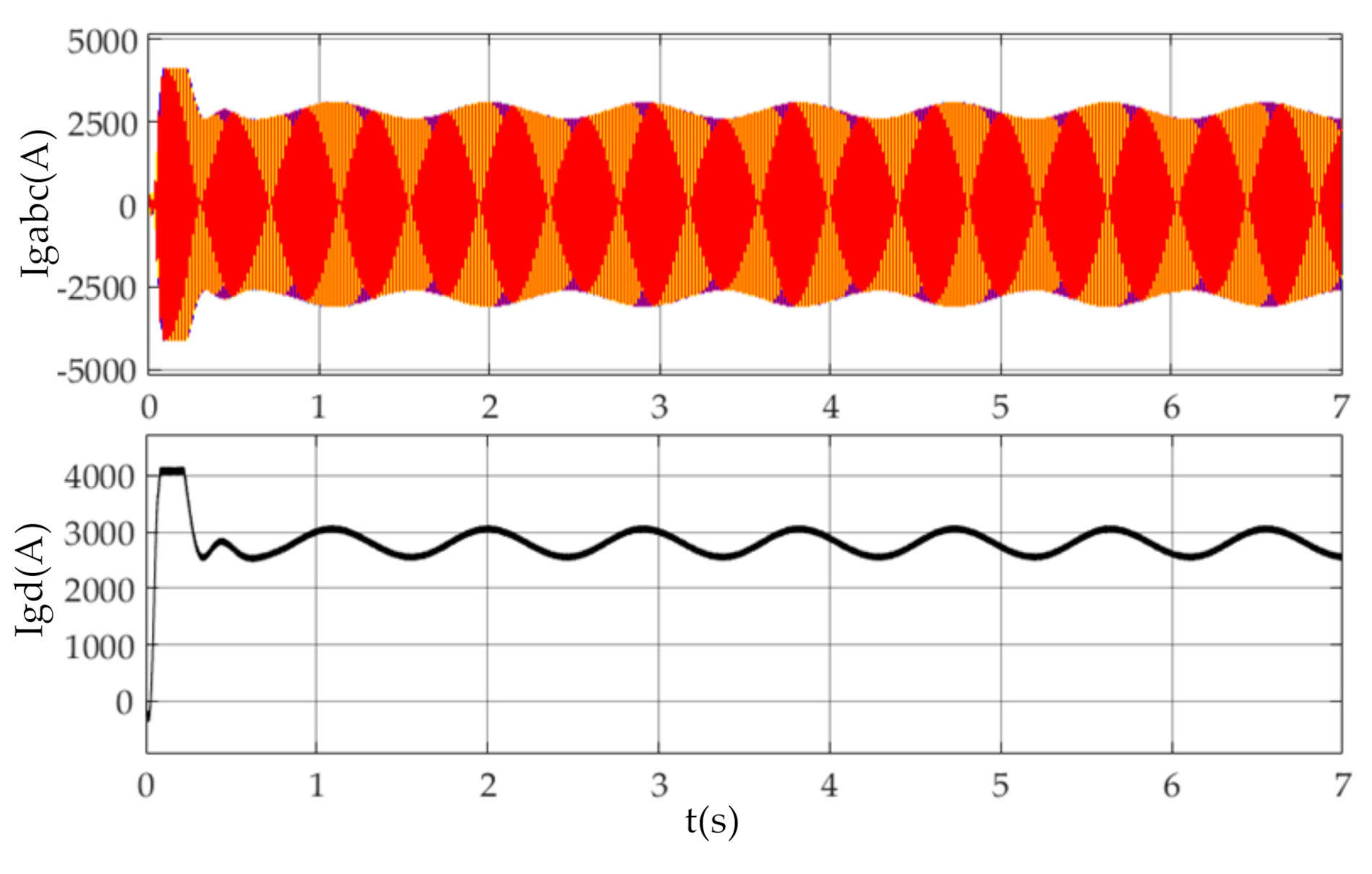


| Time (s) | Rotor Speed Steady Value (rad/s) | Torque Ripple Frequency (Hz) | Torque Ripple Percentage (%) |
|---|---|---|---|
| 0–5 | 1.15 (0.18 Hz) | 0.55 | 8.01 |
| 5–10 | 1.77 (0.28 Hz) | 0.85 | 7.98 |
| 10–15 | 2.48 (0.39 Hz) | 1.18 | 7.99 |
| Time (s) | Rotor Speed Steady Value (rad/s) | Ripple Frequency (Hz) | Ripple Active Power Percentage (%) | D-axis Ripple Current Percentage (%) |
|---|---|---|---|---|
| 0–5 | 1.06 | 0.55 | 8.31 | 7.75 |
| 5–10 | 1.77 | 0.85 | 8.45 | 8.89 |
| 10–15 | 2.48 | 1.18 | 7.80 | 7.92 |
| Current Component | iq(A) | ir0(A) | udc(V) | ic(A) | iii(A) | igd(A) |
|---|---|---|---|---|---|---|
| Steady Component | 2576 | 1652 | 1200 | 0.09 | 1652 | 2801 |
| Ripple Amplitude | 212.1 | 144.0 | 1.69 | 11.47 | 155.3 | 247.9 |
| Frequency (Hz) | 1.1 | 1.1 | 1.1 | 1.1 | 1.1 | 1.1 |
| Phase (°) | −73.4 | −66.0 | 12 | 102 | −66.9 | −66.5 |
| Time (s) | Ripple Active Power Percentage (%) | D-axis Ripple Current Percentage (%) |
|---|---|---|
| 0–5 | 1.14 | 1.14 |
| 5–10 | 0.19 | 0.17 |
| 10–15 | 0.15 | 0.13 |
| Time (s) | Wind Speed V0 (m/s) | Ripple Active Power Reduction (%) | D-axis Ripple Current Reduction (%) |
|---|---|---|---|
| 0–5 | 5 | 86.3% | 85.3% |
| 5–10 | 9 | 97.8% | 98.1% |
| 10–15 | 13 | 98.1% | 98.4% |
© 2020 by the authors. Licensee MDPI, Basel, Switzerland. This article is an open access article distributed under the terms and conditions of the Creative Commons Attribution (CC BY) license (http://creativecommons.org/licenses/by/4.0/).
Share and Cite
Li, Z.; Wang, X.; Huang, G.; Wan, H.; Chen, Y. Ripple Analysis and Suppression Method Research of Direct Drive Permanent Magnet Synchronous Wind Turbine under Wind Shear. Energies 2020, 13, 5088. https://doi.org/10.3390/en13195088
Li Z, Wang X, Huang G, Wan H, Chen Y. Ripple Analysis and Suppression Method Research of Direct Drive Permanent Magnet Synchronous Wind Turbine under Wind Shear. Energies. 2020; 13(19):5088. https://doi.org/10.3390/en13195088
Chicago/Turabian StyleLi, Zhiyong, Xin Wang, Guohang Huang, Hui Wan, and Yougen Chen. 2020. "Ripple Analysis and Suppression Method Research of Direct Drive Permanent Magnet Synchronous Wind Turbine under Wind Shear" Energies 13, no. 19: 5088. https://doi.org/10.3390/en13195088
APA StyleLi, Z., Wang, X., Huang, G., Wan, H., & Chen, Y. (2020). Ripple Analysis and Suppression Method Research of Direct Drive Permanent Magnet Synchronous Wind Turbine under Wind Shear. Energies, 13(19), 5088. https://doi.org/10.3390/en13195088





